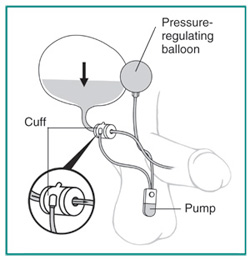How does an Artificial Sphincter help with urinary incontinence


Even though urinary incontinence is not a fatal disease, it definitely affects a person’s quality of life. Adults with urinary incontinence have to live with embarrassing conditions such as wearing diapers, the discomfort of wet undergarments, or diaper rash. These problems can have serious psychological, social and physical consequences.
There are many solutions to this problem. Meditation, exercise and medication can bring improvement. However, for those who have a urinary leak that is not corrected by these solutions, surgery involving the implantation of artificial urinary sphincters will make a big difference. A patient will be a good candidate for urinary sphincter implantation if he has severe incontinence, is unresponsive to medication, has a bladder that is neurologically intact, has no infection, and can empty his bladder completely.
Measure of Success
Most people who have had an artificial sphincter implanted have either regained complete continence or have had their condition dramatically improved. A study found that in over 90% of the study group, the artificial sphincters were working properly even five years after the surgery. However, after many years it was found that the tissue under the cuff of the sphincter tended to fray and this reduced the efficiency of the device.
About the Surgery
An artificial sphincter is made of plastic and has the following components:
- A cuff which can be inflated and fits around the urethra where it joins the bladder
- A reservoir placed above the pubic bone that holds the water when the cuff is deflated
- A pump in the scrotum which controls the inflation and deflation of the cuff
During surgery for men, a 2 or 3 inch cut is made between the scrotum and the rectum. The urethra is then separated from the surrounding organs and a cuff is placed around it at the point where the urethra comes out of the bladder. This is attached to a pump placed to next to the testicles. The pump is attached to a reservoir which has about 25 cc of salt water. When the patient feels the need to urinate he must squeeze the pump 2 or 3 times so and that the urethra is decompressed and he is able to urinate before the cuff refills. This gives him control until the next time he feels the need to urinate. The surgery normally takes one hour followed by a 24 hour hospitalization.
After the Surgery
Most patients are required to stay at least one night in the hospital following surgery. The device is deactivated for about eight weeks to enable the wounds to heal. The doctor will prescribe oral antibiotics which have to be taken for one or two weeks. The patient is advised to get plenty of rest and to abstain from sexual activity until the device is activated. The doctor and the patient must watch carefully for signs of infection such as the frequent urination, pain, any sensation of burning, fever, bleeding or urine leakage. Some of the common risks associated with the sphincter operation are its failure to work properly, infection and the device eroding through the surrounding tissue.
Important Points to Consider
An artificial urinary sphincter is a last resort for patients for whom nothing else has worked. It must be implanted by a highly experienced and skilled surgeon to work properly. The patient must also make lifestyle changes such as losing weight in order to increase the chances of becoming completely continent after the surgery.
